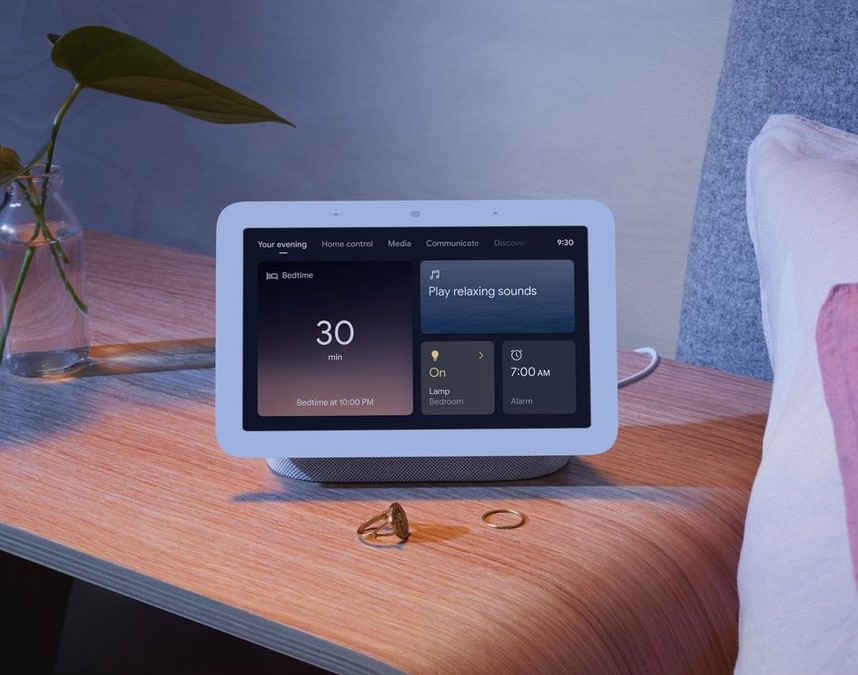Google’s new 2nd Gen Nest Hub - helps you sleep in harmony using Soli technology
30th Mar 2021 | category: IOTs | Hits: 2625
Second-generation Nest Hub revealed on 16th March has something we wanted to highlight - better nights sleep.The smart device has all the smarts and helpfulness of Google Assistant, a speaker and an edgeless glass display that's easy to clean and functions as a beautiful digital photo frame On Nest Hub you can enjoy services like YouTube Music, Spotify, Apple Music and Pandora or enjoy your favorite TV shows and movies with a subscription from providers like Netflix, Disney+ and YouTube TV.
Google 2nd Gen Nest Hub has inbuilt contactless sleep sensing chip powered by Soli technology. The sensor uses a tiny, low-energy radar system to sense motion at the micrometer level that detects small motions ranging from breathing to movements while sleeping thus giving people information about their sleep duration, routines and quality. From this data, the Nest Hub can offer personalized suggestions like waking up at a consistent time, or exercising earlier in the day.
According to Dr. Schneider “survey was conducted as nest hub 2 was developed, most people requested for assistance with their sleep” and part of the Google Health team that coupled sensor research with sleep science to power contactless sleep sensing in the new Nest Hub.
Soli for Sleep Tracking
Sleep Sensing in Nest Hub demonstrates the first wellness application of Soli, a miniature radar sensor that can be used for gesture sensing at various scales, from a finger tap to movements of a person’s body. In Pixel 4, Soli powers Motion Sense, enabling touchless interactions with the phone to skip songs, snooze alarms, and silence phone calls. We extended this technology and developed an embedded Soli-based algorithm that could be implemented in Nest Hub for sleep tracking.
Soli consists of a millimeter-wave frequency-modulated continuous wave (FMCW) radar transceiver that emits an ultra-low power radio wave and measures the reflected signal from the scene of interest. The frequency spectrum of the reflected signal contains an aggregate representation of the distance and velocity of objects within the scene.
This signal can be processed to isolate a specified range of interest, such as a user’s sleeping area, and to detect and characterize a wide range of motions within this region, ranging from large body movements to sub-centimeter respiration. see more here on